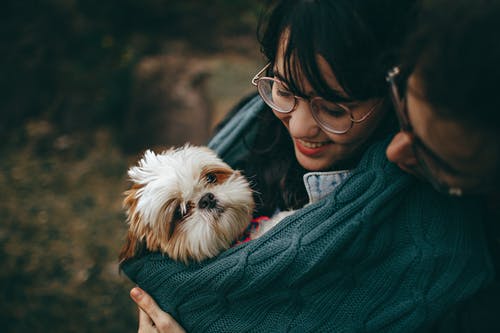What to Do if Your Pet Needs an Emergency Spay or Neuter?
Spaying and neutering pets is a common procedure performed for population control as well as to enhance pet health. However, emergencies can occur, requiring urgent procedures and post-operative care. This article aims to guide pet owners on preparing and responding if their pet needs emergency spay or neuter, covering various pre-and post-operative care steps and preparing for potential post-surgery challenges.
Spay and Neuter Procedures
The common procedures for controlling the pet population are dog spaying and neutering, collectively known as spay and neutering. These surgeries also contribute positively to pet care and animal health, reducing the risks of several diseases and behavioral issues.
Importance of Spay and Neuter Procedures
- Population Control: Spaying and neutering effectively control the pet population. They prevent unwanted litter and contribute to reducing the number of homeless pets.
- Health Benefits: These procedures can prevent pet health issues, including certain cancers and infections. This could increase your pet’s lifespan.
- Behavioral Improvements: Pets who have been spayed or neutered generally exhibit better behavior. Aggression, marking territory, and trying to escape to find a mate can be significantly reduced.
- Cost-Effective: Although these procedures have an upfront cost, they can save owners from hefty expenses related to health problems or caring for unexpected puppies or kittens.
- Community Benefits: Spaying and neutering pets can alleviate pressure on animal shelters and contribute to the betterment of the community. Reducing the stray pet population may also decrease related public issues like noise and property damage.
Preparing for the Surgery
Pre-operative care is crucial for a successful spay and neuter surgery. It involves a thorough medical check-up, administering dog vaccinations, and regulating your pet’s diet.
Understanding the General Anesthesia Process
General anesthesia minimizes pain during the surgery and keeps the animal relaxed. However, veterinarians also closely monitor for anesthesia side effects such as pet vomiting or physical exhaustion post-surgery.
Managing Post-Operative Care for Your Pet
Once the surgery is completed, your vet’s team provides immediate post-operative care at the animal hospital, focusing on surgery recovery and incision check procedures.
Home-Based Recovery Care
- Confinement: Pets must be confined to a small indoor area during recovery to limit physical activity and avoid any stress on the surgical incision.
- Incision Care: The surgical incision should be checked daily for signs of infection, such as redness, swelling, or discharge. Avoid touching the incision directly, and do not apply any ointment unless prescribed by your vet.
- Dietary Changes: Your pet might have a low appetite post-surgery, so offering soft and highly palatable food might help. Avoid drastic dietary changes as they may upset your pet’s stomach.
- Bathing Restrictions: To prevent infection, bathing is generally not recommended until the incision fully heals and the sutures are removed.
- Medication: Your vet might prescribe certain medications that should be given to your pet promptly per the vet’s instruction.
- Veterinary Follow-ups: Regular veterinary follow-ups are necessary for suture removal and addressing any concerns or complications arising during recovery.
Expected Post-Surgery Challenges
- Anesthesia Effects: Pets may feel dizzy and disoriented as an effect of anesthesia post-surgery. Lack of appetite, nausea, or vomiting can also occur.
- Pain and Discomfort: Some discomfort or pain can be expected post-surgery, which may cause restlessness or changes in behavior.
- Physical Restrictions: Pets may find it challenging to comprehend and adhere to physical restrictions such as avoiding stairs, jumping, or running, which can lead to frustration.
- Hygiene Concerns: Due to bathing restrictions to keep the incision area clean, owners might face difficulties maintaining their pet’s overall hygiene.
- Resistance to Elizabethan Collar: Pets often resist wearing the Elizabethan collar designed to prevent them from licking or scratching the surgical incision, which can cause complications in the healing process.
Managing Physical Restrictions
The pet may need an Elizabethan collar or E-collar to prevent it from irritating the incision site. During recovery, bathing restrictions are also imposed to ensure the incision site remains clean and uncontaminated.
When to Seek Immediate Veterinary Help
- Unusual Behavior: If your pet seems lethargic, has difficulty walking, or stops eating and drinking, it might indicate a problem.
- Indicators of Pain: Excessive whimpering, restlessness, or aggressive behavior when touching the surgery site could mean your pet is in pain.
- Incision Site: Regularly check the incision site. If it is excessively red, swollen, or discharged, this could be a sign of infection and needs immediate attention.
- Anesthesia Side Effects: If your pet is experiencing extreme dizziness, continuous vomiting, or diarrhea post-surgery, it could be a reaction to the anesthesia that needs immediate medical attention.
- Emergency Situations: In situations such as your pet collapsing, having seizures, or having difficulty breathing, seek immediate help from an emergency veterinary service.
One reliable place to seek medical attention is an emergency vet in Valencia, CA, which operates round the clock, ensuring your pet is never without professional veterinary care during emergencies.
Regular updates of pet medication and treatment from your vet can significantly speed up animal recovery. Every pet owner should understand that spay and neuter are not just about population control but they significantly contribute to the overall health of their pets.
Conclusion
A pet’s need for emergency spay or neuter surgery can be daunting for owners, but you can ease the process with proper guidance. From pre-operative care to managing post-operative recovery, being well-informed is vital. Understanding potential post-surgery challenges and when to seek emergency veterinary help can ensure a smooth recovery for your pet, contributing to their long-term health and happiness.

